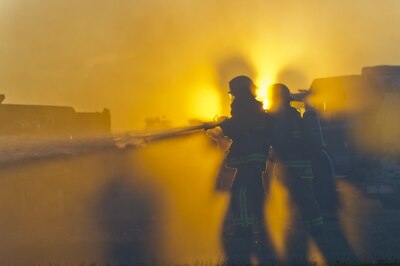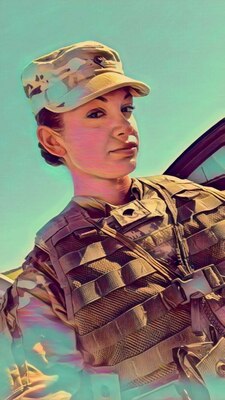By Air Force Tech. Sgt. Efren Lopez, 4th Combat Camera
Squadron
FORT MCCOY, Wis., Dec. 8, 2017 — The call to serve, protect
and cover your buddy’s back is a common theme in the military, and military
firefighters fully embrace that concept.
Patriot Warrior is the U.S. Air Force Reserve Command's
four-week exercise at Young Air Assault Strip and Volk Field Air National Guard
Base.
Citizen-airmen come together to sharpen their skills, and
the exercise provides an opportunity for the airmen to train with joint
services and is designed to test their ability to provide combat-ready forces
and operate in dynamic, contested environments.
‘Difficult, Uncomfortable Situations’
"They put us in difficult, uncomfortable situations,
but that's when we learn the most," said Air Force Senior Airman Adam
Coyle, a 445th Civil Engineer Squadron firefighter from Wright-Patterson Air
Force Base, Ohio.
Six different squadrons of firefighters from across the
country participated in this year’s Patriot Warrior, with many of the
firefighters slated to deploy overseas in the next year. Besides learning to
operate in a joint environment, the airmen engaged in hands-on training, not
just with other Air Force firefighters, but with Army firefighters as well.
An Air Force firefighter participates in a chemical,
biological, radiological, nuclear or explosive class during exercise Patriot
Warrior at Young Air Assault Strip, Fort McCoy, Wis.
An Air Force firefighter participates in a chemical,
biological, radiological, nuclear or explosive class during exercise Patriot
Warrior at Young Air Assault Strip, Fort McCoy, Wis., Aug. 11, 2017. Air Force
Photo by Tech. Sgt. Efren Lopez
The teams battle controlled burns, attend land navigation
classes and update their proficiency with firefighting tools while learning
about the structure, systems and challenges that occur in a variety of
scenarios. They also become well acquainted with the emergency procedures of
the C-130 Hercules aircraft and Army HH-60M Black Hawk medevac helicopters.
Leaping Flames, Choking Smoke
By far, the most memorable event is the jet fuel fire-pit
training. Flames leap and provide a massive pillar of smoke as the firefighters
practice attack tactics, as they combat the aircraft fires.
"This hands-on training would not be possible back at
home station, which doesn’t have those types of capabilities or funding,” said
Air Force Senior Airman Alexandrina Lopez, a 445th CES firefighter.
During the exercise, the service members practiced automobile
extrication where vehicles are set up to simulate accidents with trapped
passengers. The scenario is developed to train them on practical skills as well
as challenging their decision-making abilities as they apply various tactics to
secure the vehicles and save the victims. "I joined firefighting because I
think it’s the greatest job in the world. I love going to work, helping people,
and doing something I always wanted to do since I was a kid," said Air
Force Senior Airman Jacob Conway, a firefighter with the 445th CES.










